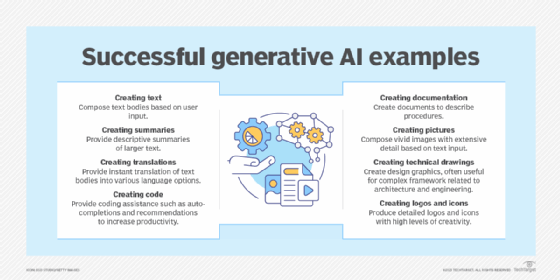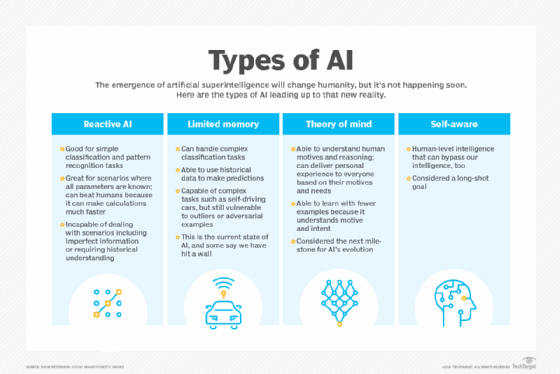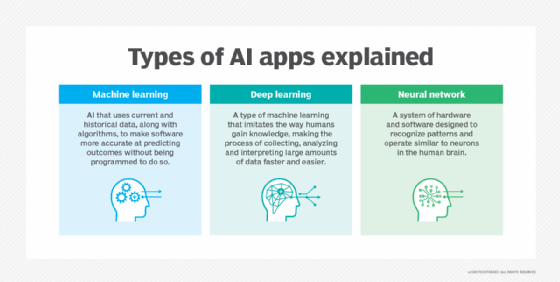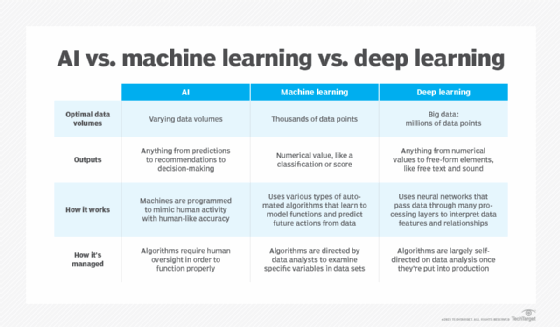Schneider Electric – Schneider Electric strengthens its leading position in Data Centers by acquiring Motivair Corporation, a key global provider of advanced liquid cooling solutions
Rueil-Malmaison (France), October 17, 2024 – Schneider Electric, the global leader in the digital transformation of energy management and automation, today announces that it has signed an agreement to acquire a controlling interest in Motivair Corporation (“Motivair”), a company specialized in liquid cooling and advanced thermal management solutions for high performance computing systems.
The advent of Generative-AI and the introduction of Large Language Models (LLMs) have been additional catalysts driving enhanced power needs to support increased digitization across end-markets. This shift to accelerated computing is resulting in new data center architectures requiring more efficient cooling solutions, particularly liquid cooling, as traditional air cooling alone cannot mitigate the higher heat generated as a result. As the compute within data centers becomes higher-density, the need for effective cooling will grow, with multiple market and analyst forecasts predicting growth in liquid cooling solutions in excess of +30%1 CAGR in the coming years. This transaction strengthens Schneider Electric’s portfolio of direct-to-chip liquid cooling and high-capacity thermal solutions, enhancing existing offerings and furthering innovation in cooling technology.
1 Omdia research, 18 June 2024; Building AI – Industrial equipment at the heart of datacenter growth, RBC Imagine™, 10 August 2024; Liquid Cooling – A Song of Ice and Fire, Jefferies, 10 September 2024; Play it Cool: An Introduction to Liquid Cooling and laying out the landscape in Europe, Morgan Stanley, 23 September 2024
Headquartered in Buffalo, NY, Motivair was founded in 1988 and currently has over 150 employees. Leveraging its strong engineering competency and deep domain expertise, Motivair has a world class range of offers including Coolant Distribution Units (CDUs), Rear Door Heat Exchangers (RDHx), Cold Plates and Heat Dissipation Units (HDUs), alongside Chillers for thermal management. Motivair provides its customers with a top-tier portfolio to meet the thermal challenges of modern computing technology.
While liquid cooling is not a new technology, specific application to the Data Center and AI environment represents a nascent market set for strong growth in the coming years. Motivair has years of unrivaled experience in cooling the world’s fastest supercomputers with liquid cooling solutions. In recent quarters, the company has been tracking a strong double-digit growth trajectory, which is expected to continue as it pivots to provide end-to-end liquid cooling solutions to several of the largest Data Center and AI customers.
Peter Herweck, Chief Executive Officer of Schneider Electric commented: “The acquisition of Motivair represents an important step, furthering our world leading position across the Data Center value chain. The unique liquid cooling portfolio of Motivair complements our value proposition in Data Center cooling and further strengthens our prominent position in Data Center build out from Grid to Chip and from Chip to Chiller.”
“Schneider Electric shares our core values and commitment to innovation, sustainability and excellence,” said Rich Whitmore, President & CEO of Motivair Corporation, who will continue to run the Motivair business out of Buffalo, NY after the closing of the transaction. “Joining forces with Schneider will enable us to further scale our operations and invest in new technologies that will drive our mission forward and solidify our position as an industry leader. We are thrilled to embark on this exciting journey together.”
Under the terms of the transaction, Schneider Electric will acquire an initial 75% controlling interest in the equity of Motivair for an all-cash consideration of $850 million, which includes the value of a tax stepup, and values Motivair at a mid-single digit multiple of projected FY2025 revenue. The transaction is subject to customary closing conditions, including the receipt of required regulatory approvals, and is expected to close in the coming quarters. On completion, Motivair would be reported within the Energy Management business of Schneider Electric. The Group expects to acquire the remaining 25% of noncontrolling interests in 2028.
Schneider Electric’s exposure to the Data Center & Networks end-market, which represented 21% of FY23 Group orders, has been a key driver of growth, with sales into the Data Center market growing at a double-digit CAGR since 2017 and set to continue in the coming years. The world’s top 10 cloud & service providers trust Schneider Electric’s solutions, while 4 out of 6 Data Center companies rely on consulting and services from its Sustainability business.
SourceSchneider Electric
EMR Analysis
More information on Schneider Electric: See the full profile on EMR Executive Services
More information on Peter Herweck (Chief Executive Officer, Schneider Electric): See the full profile on EMR Executive Services
More information on Hilary Maxson (Member of the Executive Committee and Executive Vice President, Group Chief Financial Officer, Schneider Electric): See the full profile on EMR Executive Services
More information on Energy Management by Schneider Electric: See the full profile on EMR Executive Services
More information on Olivier Blum (Member of the Executive Committee and Executive Vice-President, Energy Management, Schneider Electric): See the full profile on EMR Executive Services
More information on Motivair Corporation by Schneider Electric: https://www.motivaircorp.com/ + Our focus is cooling industries. Our Business is Cooling Yours.™
Motivair Corporation is a leading global provider of advanced liquid cooling solutions designed to meet the greatest thermal challenges of modern computing technology. As a trusted partner of leading silicon manufacturers and server OEMs, Motivair delivers cooling technology that enables breakthroughs in artificial intelligence and high-performance computing, as well as increased performance and reliability for colocation and hyperscale data centers. Motivair provides customers with a comprehensive end-to-end portfolio from a single source, offering products, systems, and services that support innovators in business, technology, and science.
Headquartered in Buffalo, NY, Motivair was founded in 1988 and currently has over 150 employees. Leveraging its strong engineering competency and deep domain expertise, Motivair has a world class range of offers including Coolant Distribution Units (CDUs), Rear Door Heat Exchangers (RDHx), Cold Plates and Heat Dissipation Units (HDUs), alongside Chillers for thermal management. Motivair provides its customers with a top-tier portfolio to meet the thermal challenges of modern computing technology.
More information on Rich Whitmore (President & Chief Executive Officer, Motivair Corporation, Schneider Electric): See the full profile on EMR Executive Services
EMR Additional Notes:
- AI – Artificial Intelligence:
- https://searchenterpriseai.techtarget.com/definition/AI-Artificial-Intelligence +
- Artificial intelligence is the simulation of human intelligence processes by machines, especially computer systems.
- As the hype around AI has accelerated, vendors have been scrambling to promote how their products and services use AI. Often what they refer to as AI is simply one component of AI, such as machine learning. AI requires a foundation of specialized hardware and software for writing and training machine learning algorithms. No one programming language is synonymous with AI, but well a few, including Python, R and Java, are popular.
- In general, AI systems work by ingesting large amounts of labeled training data, analyzing the data for correlations and patterns, and using these patterns to make predictions about future states. In this way, a chatbot that is fed examples of text chats can learn to produce lifelike exchanges with people, or an image recognition tool can learn to identify and describe objects in images by reviewing millions of examples.
- AI programming focuses on three cognitive skills: learning, reasoning and self-correction.
- What are the 4 types of artificial intelligence?
- Type 1: Reactive machines. These AI systems have no memory and are task specific. An example is Deep Blue, the IBM chess program that beat Garry Kasparov in the 1990s. Deep Blue can identify pieces on the chessboard and make predictions, but because it has no memory, it cannot use past experiences to inform future ones.
- Type 2: Limited memory. These AI systems have memory, so they can use past experiences to inform future decisions. Some of the decision-making functions in self-driving cars are designed this way.
- Type 3: Theory of mind. Theory of mind is a psychology term. When applied to AI, it means that the system would have the social intelligence to understand emotions. This type of AI will be able to infer human intentions and predict behavior, a necessary skill for AI systems to become integral members of human teams.
- Type 4: Self-awareness. In this category, AI systems have a sense of self, which gives them consciousness. Machines with self-awareness understand their own current state. This type of AI does not yet exist.
- Machine Learning (ML):
- Developed to mimic human intelligence, it lets the machines learn independently by ingesting vast amounts of data, statistics formulas and detecting patterns.
- ML allows software applications to become more accurate at predicting outcomes without being explicitly programmed to do so.
- ML algorithms use historical data as input to predict new output values.
- Recommendation engines are a common use case for ML. Other uses include fraud detection, spam filtering, business process automation (BPA) and predictive maintenance.
- Classical ML is often categorized by how an algorithm learns to become more accurate in its predictions. There are four basic approaches: supervised learning, unsupervised learning, semi-supervised learning and reinforcement learning.
- Deep Learning (DL):
- Subset of machine learning, Deep Learning enabled much smarter results than were originally possible with ML. Face recognition is a good example.
- DL makes use of layers of information processing, each gradually learning more and more complex representations of data. The early layers may learn about colors, the next ones about shapes, the following about combinations of those shapes, and finally actual objects. DL demonstrated a breakthrough in object recognition.
- DL is currently the most sophisticated AI architecture we have developed.
- Computer Vision (CV):
- Computer vision is a field of artificial intelligence that enables computers and systems to derive meaningful information from digital images, videos and other visual inputs — and take actions or make recommendations based on that information.
- The most well-known case of this today is Google’s Translate, which can take an image of anything — from menus to signboards — and convert it into text that the program then translates into the user’s native language.
- Machine Vision (MV):
- Machine Vision is the ability of a computer to see; it employs one or more video cameras, analog-to-digital conversion and digital signal processing. The resulting data goes to a computer or robot controller. Machine Vision is similar in complexity to Voice Recognition.
- MV uses the latest AI technologies to give industrial equipment the ability to see and analyze tasks in smart manufacturing, quality control, and worker safety.
- Computer Vision systems can gain valuable information from images, videos, and other visuals, whereas Machine Vision systems rely on the image captured by the system’s camera. Another difference is that Computer Vision systems are commonly used to extract and use as much data as possible about an object.
- Generative AI (GenAI):
- Generative AI technology generates outputs based on some kind of input – often a prompt supplied by a person. Some GenAI tools work in one medium, such as turning text inputs into text outputs, for example. With the public release of ChatGPT in late November 2022, the world at large was introduced to an AI app capable of creating text that sounded more authentic and less artificial than any previous generation of computer-crafted text.
- https://searchenterpriseai.techtarget.com/definition/AI-Artificial-Intelligence +




- Edge AI Technology:
- Edge artificial intelligence refers to the deployment of AI algorithms and AI models directly on local edge devices such as sensors or Internet of Things (IoT) devices, which enables real-time data processing and analysis without constant reliance on cloud infrastructure.
- Simply stated, edge AI, or “AI on the edge“, refers to the combination of edge computing and artificial intelligence to execute machine learning tasks directly on interconnected edge devices. Edge computing allows for data to be stored close to the device location, and AI algorithms enable the data to be processed right on the network edge, with or without an internet connection. This facilitates the processing of data within milliseconds, providing real-time feedback.
- Self-driving cars, wearable devices, security cameras, and smart home appliances are among the technologies that leverage edge AI capabilities to promptly deliver users with real-time information when it is most essential.
- Multimodal Intelligence and Agents:
- Subset of artificial intelligence that integrates information from various modalities, such as text, images, audio, and video, to build more accurate and comprehensive AI models.
- Multimodal capabilities allows to interact with users in a more natural and intuitive way. It can see, hear and speak, which means that users can provide input and receive responses in a variety of ways.
- An AI agent is a computational entity designed to act independently. It performs specific tasks autonomously by making decisions based on its environment, inputs, and a predefined goal. What separates an AI agent from an AI model is the ability to act. There are many different kinds of agents such as reactive agents and proactive agents. Agents can also act in fixed and dynamic environments. Additionally, more sophisticated applications of agents involve utilizing agents to handle data in various formats, known as multimodal agents and deploying multiple agents to tackle complex problems.
- Large Language Models (LLM’s):
- A large language model (LLM) is a deep learning algorithm that can perform a variety of natural language processing (NLP) tasks. Large language models use transformer models and are trained using massive datasets — hence, large. This enables them to recognize, translate, predict, or generate text or other content.
- There are multiple large language models developed. Examples include the GPT-3 and GPT-4 from OpenAI, LLaMA from Meta, and PaLM2 from Google. These are models that can understand language and can generate text.
- Cloud Computing:
- Cloud computing is a general term for anything that involves delivering hosted services over the internet. … Cloud computing is a technology that uses the internet for storing and managing data on remote servers and then access data via the internet.
- Cloud computing is the on-demand availability of computer system resources, especially data storage and computing power, without direct active management by the user. Large clouds often have functions distributed over multiple locations, each location being a data center.
- Edge Computing:
- Edge computing is a form of computing that is done on site or near a particular data source, minimizing the need for data to be processed in a remote data center.
- Edge computing can enable more effective city traffic management. Examples of this include optimising bus frequency given fluctuations in demand, managing the opening and closing of extra lanes, and, in future, managing autonomous car flows.
- An edge device is any piece of hardware that controls data flow at the boundary between two networks. Edge devices fulfill a variety of roles, depending on what type of device they are, but they essentially serve as network entry — or exit — points.
- There are five main types of edge computing devices: IoT sensors, smart cameras, uCPE equipment, servers and processors. IoT sensors, smart cameras and uCPE equipment will reside on the customer premises, whereas servers and processors will reside in an edge computing data centre.
- In service-based industries such as the finance and e-commerce sector, edge computing devices also have roles to play. In this case, a smart phone, laptop, or tablet becomes the edge computing device.
- Edge Devices:
- Edge devices encompass a broad range of device types, including sensors, actuators and other endpoints, as well as IoT gateways. Within a local area network (LAN), switches in the access layer — that is, those connecting end-user devices to the aggregation layer — are sometimes called edge switches.
- Data Centers:
- A data center is a facility that centralizes an organization’s shared IT operations and equipment for the purposes of storing, processing, and disseminating data and applications. Because they house an organization’s most critical and proprietary assets, data centers are vital to the continuity of daily operations.
- Hyperscale Data Centers:
- The clue is in the name: hyperscale data centers are massive facilities built by companies with vast data processing and storage needs. These firms may derive their income directly from the applications or websites the equipment supports, or sell technology management services to third parties.
- CDU (Coolant Distribution Unit):
- A coolant distribution unit contains a pump that circulates coolant through a network of pipes or channels, distributing it to various components like servers, processors, or other high heat components in large, high power devices that need cooling.
- Coolant Distribution Units are essential in data centers with high-density applications providing close controlled coolant delivery and precise control of the liquid cooling system. They help manage heat loads, reduce power consumption, and increase efficiency and reliability through redundancy.
- RDHX (Rear Door Heat Exchanger):
- Chilled water cooling doors that fit onto a IT rack. The air is pulled through the rack by the fans or pushed through by the server fans for the passive rear door (no fans).
- HDU (Heat Dissipation Unit):
- Unlike a Coolant Distribution Unit (CDU) that rejects heat from the server rack to the chilled water loop of the building, a Heat Dissipation Unit (HDU™) rejects the server heat from the server rack to the white space where building air conditioning would then remove that heat.
- Grid, Microgrids, DERs and DERM’s:
- The power grid is a network for delivering electricity to consumers. The power grid includes generator stations, transmission lines and towers, and individual consumer distribution lines.
- The grid constantly balances the supply and demand for the energy that powers everything from industry to household appliances.
- Electric grids perform three major functions: power generation, transmission, and distribution.
- A microgrid is a small-scale power grid that can operate independently or collaboratively with other small power grids. The practice of using microgrids is known as distributed, dispersed, decentralized, district or embedded energy production.
- Smart Grid is any electrical grid + IT at all levels . Micro Grid is a group of interconnected loads and DERs (Distributed energy resources) within a clearly defined electrical and geographical boundaries witch acts as a single controllable entity with respect to the main grid.
- Distributed energy resources (DERs) are small-scale electricity supply (typically in the range of 3 kW to 50 MW) or demand resources that are interconnected to the electric grid. They are power generation resources and are usually located close to load centers, and can be used individually or in aggregate to provide value to the grid.
- Common examples of DERs include rooftop solar PV units, natural gas turbines, microturbines, wind turbines, biomass generators, fuel cells, tri-generation units, battery storage, electric vehicles (EV) and EV chargers, and demand response applications.
- Distributed energy resources management systems (DERMS) are platforms which helps mostly distribution system operators (DSO) manage their grids that are mainly based on distributed energy resources (DER).
- DERMS are used by utilities and other energy companies to aggregate a large energy load for participation in the demand response market. DERMS can be defined in many ways, depending on the use case and underlying energy asset.


